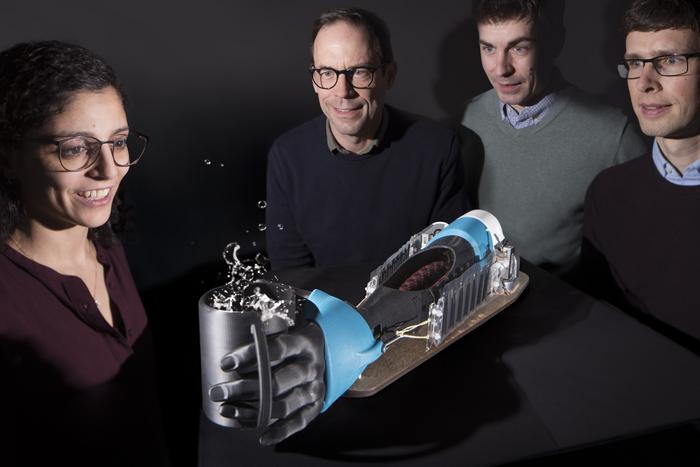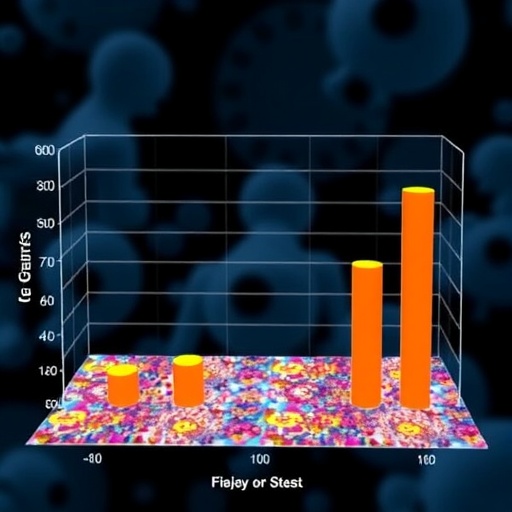Scientists at the Max Planck Institute for Intelligent Systems, in collaboration with the University of Tübingen and the University of Stuttgart, have made a groundbreaking advance in the field of soft robotics. Their research targets tremors—unwanted, involuntary movements that can profoundly affect the daily lives of millions. A staggering 80 million individuals around the world struggle with tremors due to conditions such as Parkinson’s disease. This new development isn’t merely an equipment upgrade; it’s a potential game-changer, offering a practical approach to an age-old struggle.
The team’s research centers on the integration of HASEL (Hydraulically Amplified Self-healing Electrostatic) artificial muscles into a biorobotic arm. This innovative device has been designed to mimic human tremors with exceptional accuracy. Essentially, it acts as a “mechanical patient,” simulating the tremor experiences of individuals. The researchers managed to capture real tremors from various patients and project these onto the robotic arm, allowing the system to reproduce the exact shaking motions that a patient might experience. The implications of this technology could drastically reshape how tremor management is approached in both clinical settings and daily life.
One striking benefit of utilizing artificial muscles made from electro-hydraulic actuators is their lightweight design. They not only function efficiently but do so without adding a cumbersome burden to the user. When the tremor suppression mechanism is activated, these artificial muscles contract and relax in a highly calibrated manner. This dynamic reaction effectively cancels out the undesired movements associated with tremors. As a result, when a person suffering from tremors uses a supportive device equipped with this technology, the tremors become nearly imperceptible, allowing for improved functionality in everyday tasks.
The research team articulated two essential aims for their biorobotic arm. Firstly, the device is intended to serve as a versatile platform for other scientists and engineers specializing in assistive technologies. In conjunction with biomechanical simulations, this mechanical arm allows for rapid testing and validation of various soft actuator designs and functions. This capability diminishes the reliance on time-consuming clinical trials, an aspect that is especially valuable considering that obtaining approval for such trials can be legally challenging in many countries.
The second goal is to verify the potential of HASELs as foundational components in an assistive wearable device. Over several years, these artificial muscles have undergone meticulous refinement and development, positioning them as promising candidates for future medical applications. The vision of the research team is to create wearable support that can seamlessly integrate into the lives of tremor patients. Such a garment would not only be functional but also discreet enough that it could be easily mistaken for ordinary clothing, thereby reducing the associated stigma of using assistive technology.
Alona Shagan Shomron, a postdoctoral researcher involved in this project, articulates the vision of using HASEL technology in practical applications succinctly. She emphasizes that their artificial muscles have demonstrated the necessary speed and strength required to address a wide range of tremor magnitudes. This realization paints an optimistic picture for individuals experiencing tremors, affirming that technology can indeed offer tangible solutions to human problems.
Collaboration lies at the heart of this project, as evidenced by the diverse expertise of the researchers involved. Daniel Häufle, a professor at the Hertie Institute for Clinical Brain Research, contributed his insights by creating the computer simulations that inform the functionality of the biorobotic arm. The collaboration among these researchers ensures that the scientific foundation for this project is as robust as possible, harnessing knowledge from various sectors of research to enhance overall quality.
The research team acknowledges the limitations and challenges of existing prototypes aimed at addressing tremors. Many available devices are insufficiently sophisticated, which underscores the necessity for innovations such as this biorobotic arm. The diverse applications of robotics in healthcare are becoming increasingly evident, and this project showcases its potential as an essential tool for clinicians and researchers alike.
As noted by Syn Schmitt, a professor specializing in computational biophysics and biorobotics, the mechanical patient significantly streamlines early-stage technology testing. Developing high-potential ideas can often be stifled by the demanding resource requirements of clinical testing. This robot offers a solution by enabling researchers to conduct early evaluations, thus providing a framework for funding and developing concepts that may otherwise be neglected.
The research embodies a broader message regarding the vital role of soft robotics in shaping future healthcare solutions. Christoph Keplinger, the director of the Robotic Materials Department at MPI-IS, encapsulates this sentiment, illustrating how flexible and deformable materials could become pivotal components in the next generation of assistive devices. The integration of this innovative technology signals a promising future where mobility and autonomy can be restored to individuals affected by debilitating conditions.
As the scientific community takes note of these advances, the next steps involve refining these systems further and potentially conducting trials in real-world settings. With the right framework in place, this research could soon evolve from the laboratory into the lives of those who need it most, bringing hope and relief to millions.
By harnessing the power of collaborative innovation, the research arms itself with the potential to minimize the impact of tremors on daily living, where simple tasks can often turn into significant challenges. The full realization of this project’s goals hinges on continued investment, research, and development, ensuring a pathway from concept to reality for wearable technologies that enhance quality of life.
As discussions surrounding this promising research continue, it becomes increasingly clear that the intersection of robotics and healthcare holds transformative potential. With a robust strategy in place, the aim is to deliver life-changing solutions that address specific medical needs, demonstrating the power of science when it harmonizes with innovation.
Ultimately, this research serves as a beacon of hope, highlighting how the fusion of technology and meticulous research can lead to breakthroughs that fundamentally enhance the human experience, particularly in the realm of healthcare.
Subject of Research: Soft robotics and artificial muscles for tremor suppression
Article Title: A robotic and virtual testing platform highlighting promise of soft wearable actuators for suppression of wrist tremor
News Publication Date: 6-Mar-2025
Web References: Device
References: A. Shagan Shomron, C. Chase-Markopoulou, J. R. Walter, J. Sellhorn-Timm, Y. Shao, T. Nadler, A. Benson, I. Wochner, E. H. Rumley, I. Wurster, P. Klocke, D. Weiss, S. Schmitt, C. Keplinger, D. Haeufle, “A robotic and virtual testing platform highlighting promise of soft wearable actuators for suppression of wrist tremor”, Device, 2025.
Image Credits: MPI-IS / W. Scheible
Keywords: Artificial muscles, Soft robotics, Biomimetics, Tremor suppression, Assistive technology, Human health, Biomedical engineering.
Tags: Advancements in artificial musclesbiorobotic arm technologyclinical applications of roboticselectro-hydraulic actuators in roboticsHASEL artificial musclesinvoluntary movement researchlightweight robotic technologymechanical patient simulationParkinson’s disease managementpatient-centered robotic solutionssoft robotics innovationstremor control solutions





